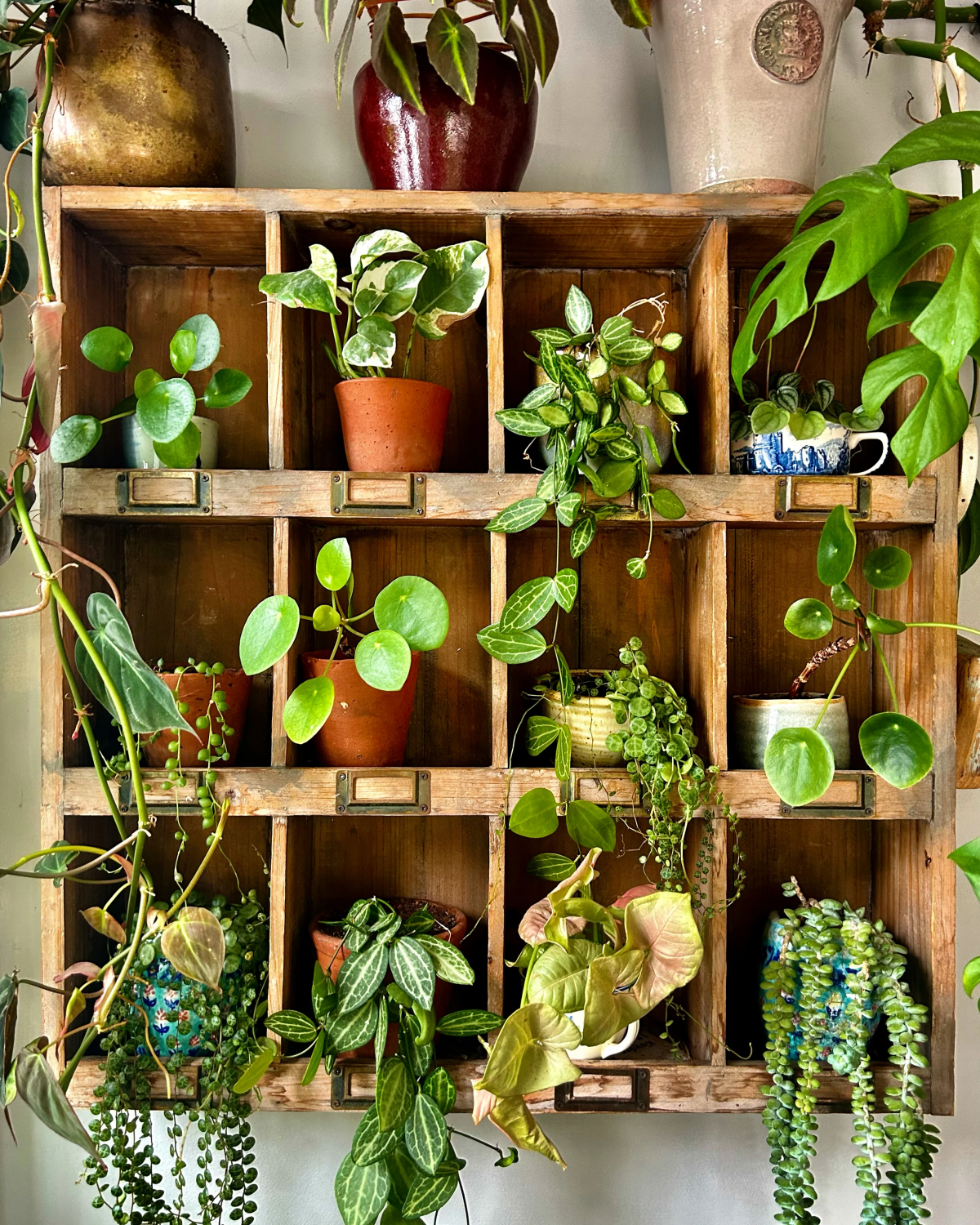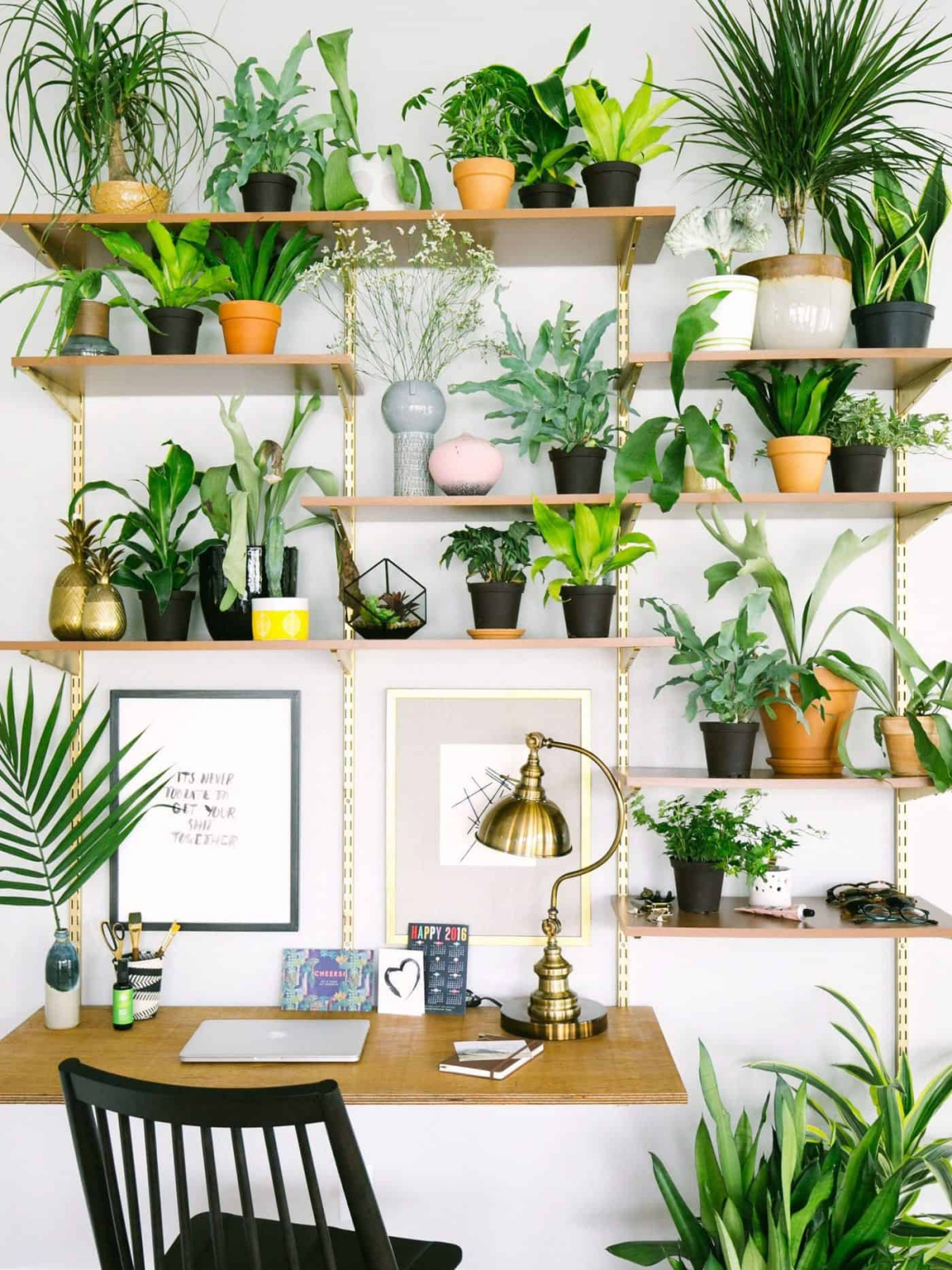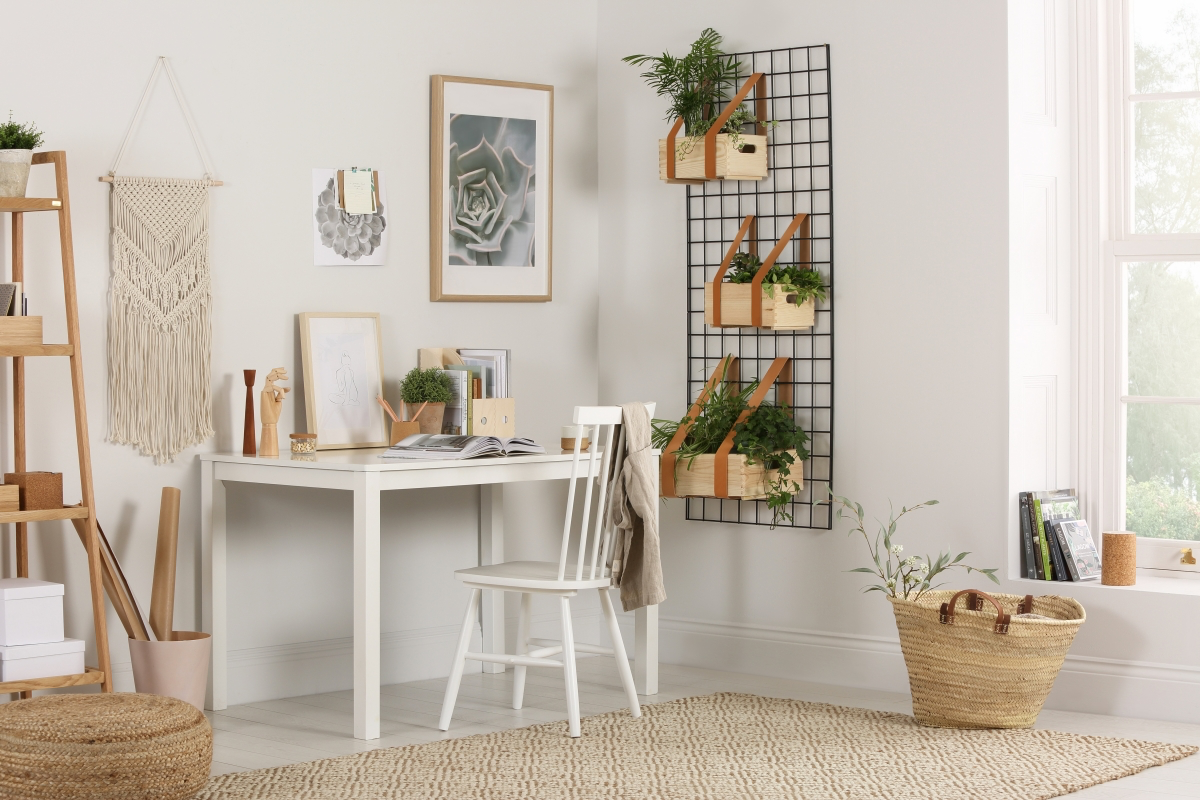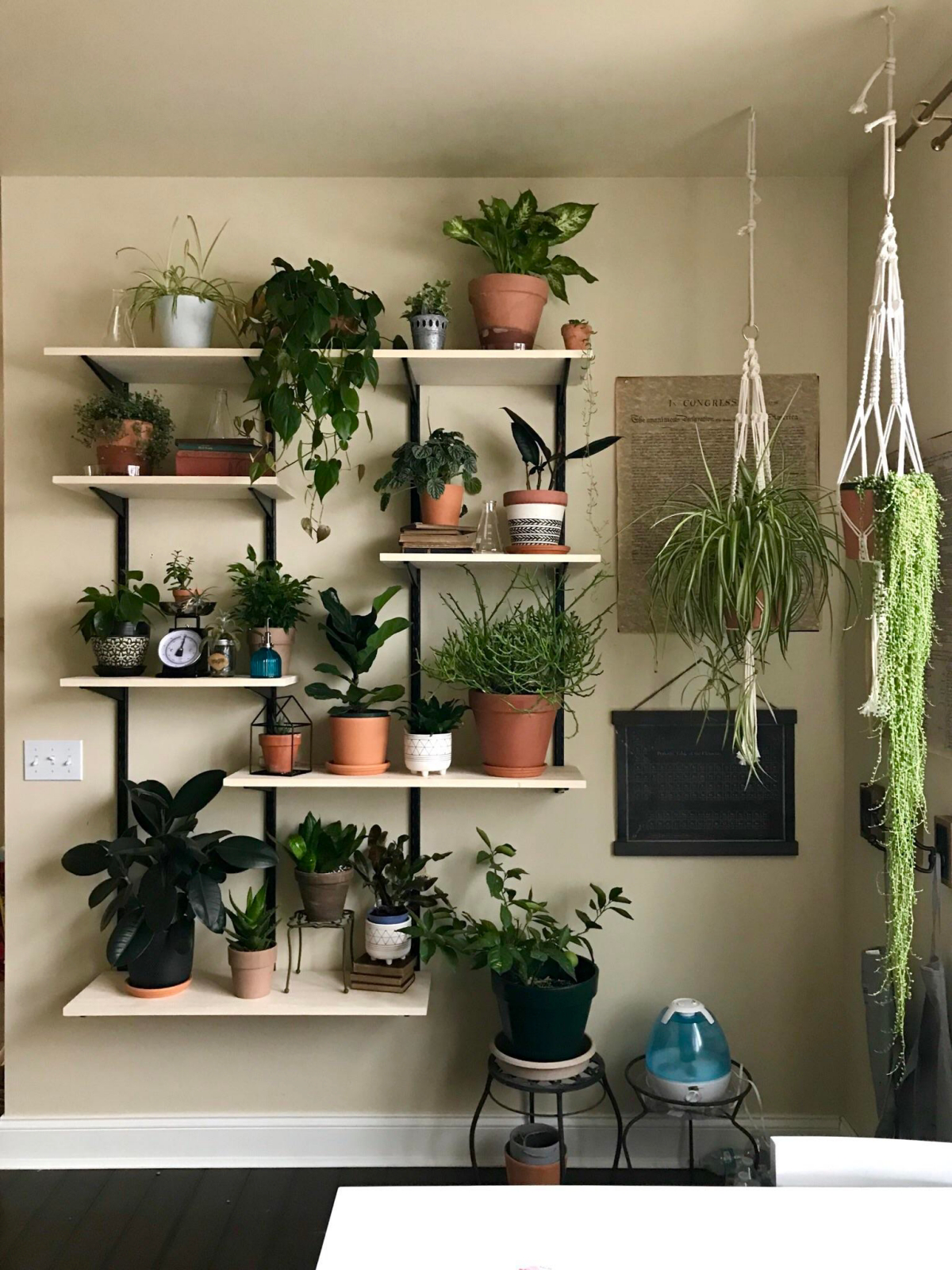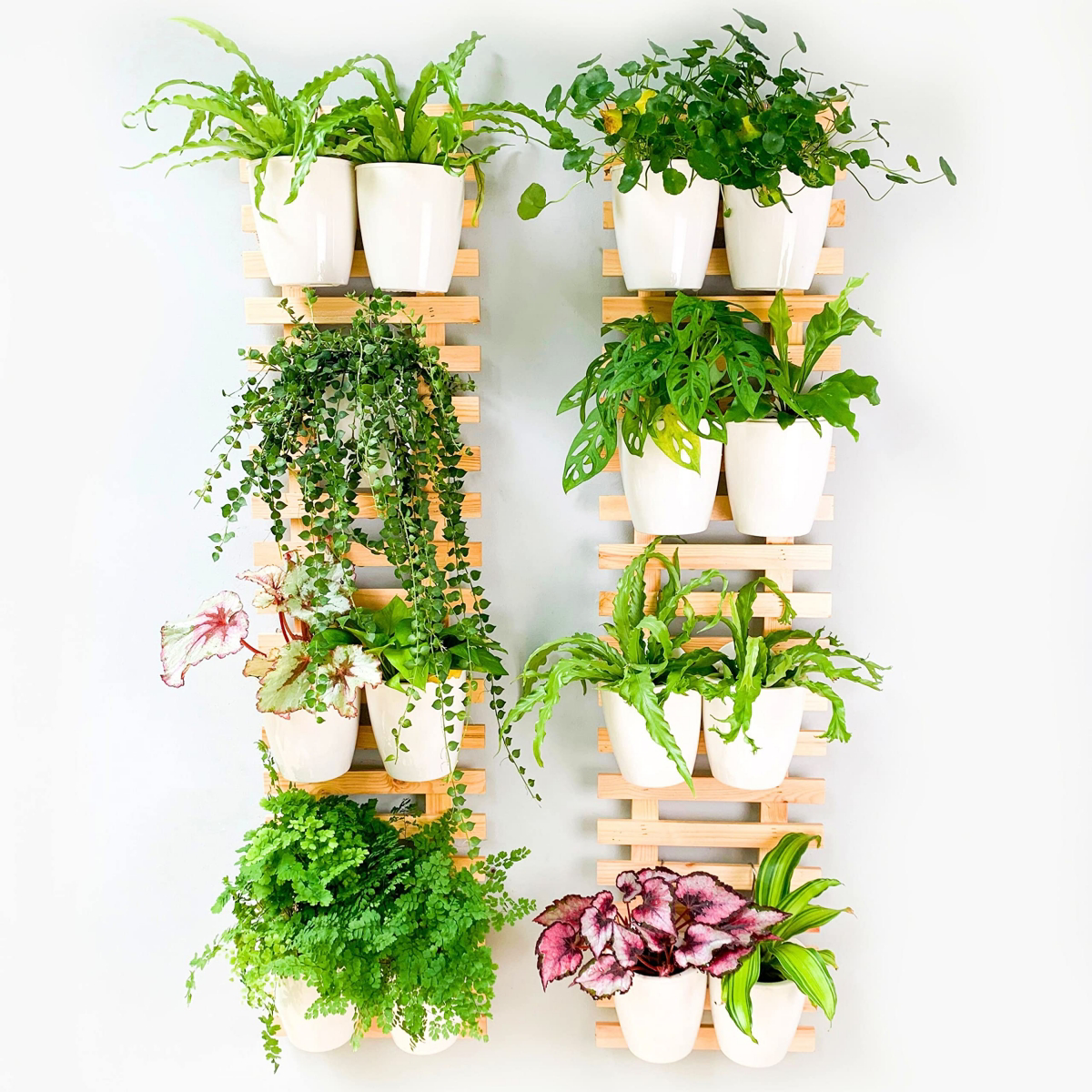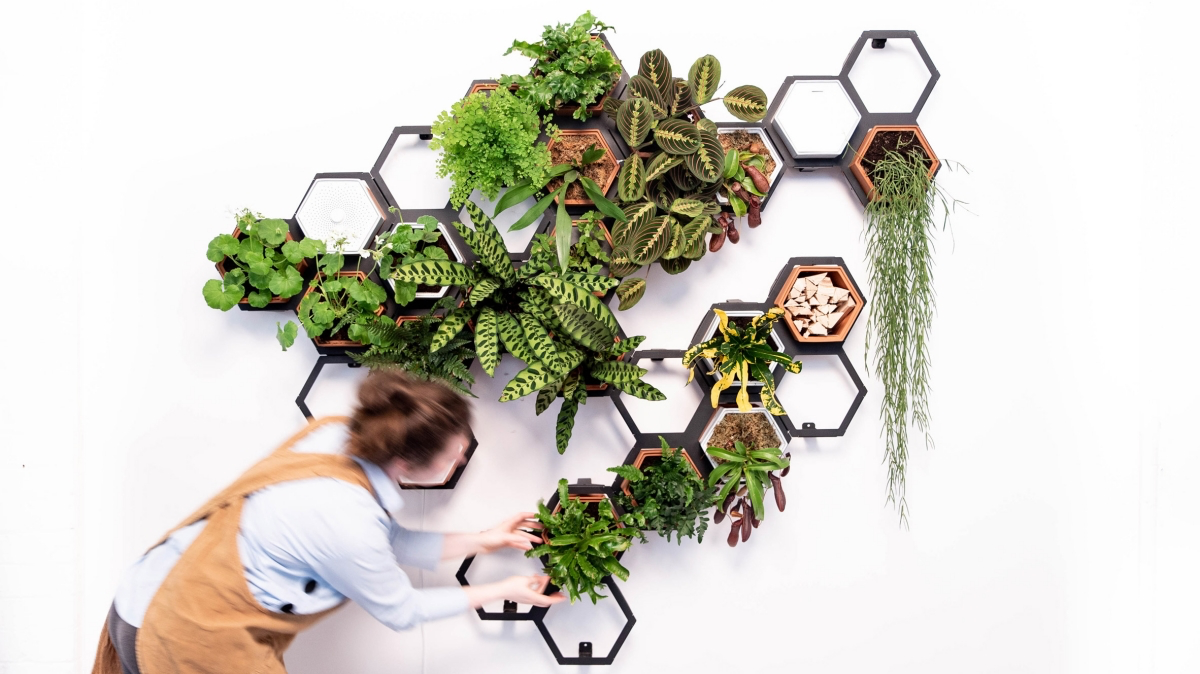Plant Wall Guide: The Botanical Beauty of a Living, Green Wall
In the realm of interior design and home decor, there’s a captivating trend that’s taking root and flourishing – plant walls. These vertical gardens are more than just a passing fad; they’re a green revolution that brings nature indoors. In this comprehensive guide, we’ll explore everything you need to know about plant walls, from their various types and costs to the perfect plants for these living artworks. Whether you’re a seasoned green thumb or just dipping your toes into the world of botanical beauty, this guide is your passport to creating your very own lush oasis on your walls.
Let’s dive into the world of indoor vertical greenery!
In this article
- What is a Plant Wall?
- What Are the Types of Plant Walls?
- How Much Does It Usually Cost?
- Who Should Get a Plant Wall?
- Who Should Avoid a Plant Wall and Why?
- What Are the Benefits of a Plant Wall?
- What Plants Are Best Suited for a Plant Wall?
- How to Take Care of a Plant Wall
- How to Maintain a Plant Wall
- Conclusion
- More Articles You Might Like
What is a Plant Wall?
A plant wall, also known as a living wall or green wall, is a stunning vertical garden that breathes life into your living spaces. It’s a carefully curated collection of plants, herbs, or even succulents, arranged in a way that transforms your walls into a vibrant tapestry of greenery. These botanical masterpieces not only serve as eye-catching decor but also bring a breath of fresh air into your home. Plant walls can range from small and simple installations to grand, lush displays that cover entire walls, providing a mesmerizing connection between nature and architecture.
A plant wall is a living wall or green wall that breathes life into your indoor space
What Are the Types of Plant Walls?
Plant walls come in various forms, each with its unique charm and characteristics. Here’s a glimpse into the diverse world of plant wall types:
- Modular Plant Walls: These are pre-designed panels that can be easily installed and customized to your liking. They offer flexibility and are ideal for beginners.
- Framed Plant Walls: Picture frames filled with plants create a stunning visual effect, turning your walls into living artwork.
- Pocket Plant Walls: Small pockets or containers are attached to the wall, allowing you to arrange a variety of plants in a creative way.
- Hydroponic Plant Walls: These futuristic setups use a soil-less system to grow plants vertically, making them an excellent choice for those with limited space.
- Preserved Plant Walls: For low-maintenance enthusiasts, preserved plant walls use dried and treated plants that require no watering.
- Living Wall Systems: These intricate setups feature a variety of plant species and irrigation systems. They are often designed by professionals and require ongoing maintenance but offer a lush and impressive display.
- Indoor Plant Shelves: While not traditional walls, these shelves are mounted on walls and can hold an array of potted plants, creating a wall-like effect with added dimension.
- Vertical Gardens: These gardens are larger in scale and can encompass entire walls, making a bold statement and providing ample space for various plant species.
- Plant Divider Walls: These functional plant walls can serve as room dividers, adding privacy and beauty to your space.
You can easily find a plant wall installation that will perfectly fit your aesthetic
How Much Does It Usually Cost?
The cost of a plant wall can vary widely based on factors like size, plant selection, and complexity of installation. A small, DIY plant wall can be budget-friendly, while larger, professionally designed installations can be a more significant investment. On average, expect to budget anywhere from a few hundred to a few thousand dollars for your very own botanical masterpiece.
Professionally designed installations can be a more significant investment
Who Should Get a Plant Wall?
Plant walls are for everyone who seeks to infuse their living spaces with nature’s beauty. Whether you’re an urban dweller yearning for a touch of green in your apartment or a suburban homeowner looking to enhance your garden, a plant wall can be tailored to suit your lifestyle. It’s an excellent choice for:
- Nature Enthusiasts: Those who adore plants and want to bring the outdoors in.
- Space Maximizers: Individuals with limited floor space looking to maximize their greenery.
- Aesthetic Aficionados: Anyone with an eye for design and a love for unique decor.
- Health and Wellness Advocates: Those who value the air-purifying benefits of indoor plants.
- DIY Enthusiasts: Crafters and gardeners eager for a hands-on project.
- Urban Oasis Seekers: City dwellers craving a slice of nature in their concrete jungles.
- Green Thumb Novices: Many plant wall systems offer easy maintenance and can help you build confidence in your plant care skills.
- Eco-Conscious Individuals: They promote green living by improving indoor air quality and reducing the carbon footprint associated with traditional home decor.
- Wellness Enthusiasts: If you prioritize well-being and tranquility in your living space, a plant wall can be a therapeutic addition.
- Artistic Souls: Create your living masterpiece by arranging plants in unique patterns and combinations.
- Families and Children: A plant wall can serve as an educational tool and a source of wonder for kids, teaching them about responsibility and nurturing.
Perfect for individuals with limited floor space looking to maximize their greenery
Who Should Avoid a Plant Wall and Why?
While plant walls are a captivating addition to many spaces, there are situations where they might not be the best fit. Consider alternative options if:
- You have severe allergies: If you or your family members have pollen allergies, certain plants on your wall may trigger discomfort.
- You lack proper lighting: Some plants require specific lighting conditions to thrive, so if your space doesn’t meet these requirements, it’s best to explore other indoor plant options.
- You can’t commit to maintenance: Plant walls, like any garden, require care. If you’re unable to provide adequate watering and maintenance, it’s better to opt for low-maintenance alternatives.
- Your wall isn’t suitable: Ensure your wall can support the weight of the plants and the chosen installation method. If your wall structure isn’t suitable, it’s best to consult with a professional before proceeding.
If you or your family members have pollen allergies, a plant wall may trigger discomfort
What Are the Benefits of a Plant Wall?
Plant walls offer an array of benefits that extend beyond their aesthetic appeal. Let’s explore the advantages and disadvantages of these green installations, starting with the positives.
Let’s explore tha main advantages and disadvantages of indoor plant walls
Advantages of a Plant Wall:
- Improved Air Quality: Plants act as natural air purifiers, removing toxins and providing fresh oxygen.
- Enhanced Aesthetics: Plant walls add a touch of elegance and vitality to any space, making them a visual delight.
- Space Optimization: Ideal for small spaces, plant walls allow you to enjoy greenery without sacrificing valuable floor space.
- Stress Reduction: The presence of plants has been linked to reduced stress levels and increased well-being.
- Connection to Nature: Plant walls provide a continuous reminder of nature’s beauty and can improve your overall mood.
- Sound Insulation: They can help reduce noise levels in your home, creating a more peaceful environment.
Plant walls add a touch of elegance and vitality to any space
Disadvantages of a Plant Wall:
- Maintenance: Plant walls require regular care, including watering, pruning, and monitoring for pests.
- Expense: Larger and more intricate plant walls can be costly to install and maintain.
- Allergies: Some individuals may be allergic to certain plants used in plant walls.
- Lighting Requirements: Certain plants have specific lighting needs, which can be challenging to meet indoors.
- Limited Plant Choices: Not all plants are suitable for vertical growth, limiting your options.
Plant walls require regular care and maintanance
What Plants Are Best Suited for a Plant Wall?
Selecting the right plants is crucial to the success of your plant wall. Opt for species that thrive vertically and adapt well to indoor conditions. Some popular choices include:
- Pothos: Known for its easy care and trailing vines, pothos is an excellent choice for beginners.
- Spider Plant: These hardy plants thrive in various lighting conditions and produce striking arching leaves.
- Succulents: Low-maintenance and visually appealing, succulents can add texture and color to your plant wall.
- Ferns: These graceful plants enjoy humidity and can create a lush, cascading effect.
- Ivy: Ivy varieties like English Ivy are known for their elegant, trailing growth and air-purifying qualities.
- String of Pearls: This charming succulent features cascading strings of round, bead-like leaves, adding a touch of whimsy to your wall.
- Snake Plant: Known for its air-purifying qualities, snake plants thrive in low light conditions, making them an excellent choice for indoor plant walls.
- Air Plants (Tillandsia): These unique plants don’t require soil and absorb nutrients and moisture from the air. They come in various shapes and sizes, making them perfect for creative arrangements.
- Lipstick Plant: With its vibrant red tubular flowers, the lipstick plant adds a pop of color and a tropical feel to your vertical garden.
- Maidenhair Vine: This delicate vine produces tiny, feathery leaves that create an ethereal, airy appearance on your plant wall.
- Ficus Pumila (Creeping Fig): This fast-growing vine is known for its heart-shaped leaves and can quickly cover your wall with lush greenery.
- Moss: Moss walls are gaining popularity for their serene, zen-like appearance and require minimal maintenance.
- Herbs: Herbs like basil, mint, and oregano can be incorporated into your plant wall, providing fresh ingredients for your culinary adventures.
- Ficus Elastica (Rubber Plant): With its broad, dark green leaves, the rubber plant adds a touch of elegance and drama to your wall.
These are the best plant species that will thrive vertically
How to Take Care of a Plant Wall
Taking care of a plant wall involves several essential steps to ensure your greenery thrives:
- Watering: Be consistent with your watering schedule. Ensure the soil is moist but not waterlogged, and be mindful of the specific needs of each plant species.
- Pruning: Regularly trim overgrown or dead growth to maintain the wall’s shape and aesthetics.
- Fertilizing: Use a balanced, water-soluble fertilizer to provide essential nutrients to your plants.
- Pest Control: Keep an eye out for pests like aphids or spider mites and take action promptly if you notice an infestation.
- Light: Ensure your plant wall receives adequate light, as each plant may have different lighting requirements.
- Rotation: Periodically rotate your plants to ensure even growth and prevent them from leaning towards the light source.
- Humidity: Many indoor plants thrive in higher humidity levels. You can mist your plant wall with water to increase humidity, especially during dry seasons.
- Monitoring: Keep an eye on your plants for any signs of stress or disease, such as yellowing leaves or wilting. Address issues promptly to maintain the health of your green wall.
- Potting Mix: Ensure you use a well-draining potting mix that suits the needs of the plants in your wall. Different species may require specific types of soil.
- Support: Provide support structures like trellises or frames if your plant wall includes climbing or vining plants that need additional stability.
- Feeding Schedule: Establish a feeding schedule for fertilizing your plants, typically during their growing season. Follow the recommended guidelines for each plant species.
- Temperature: Maintain a consistent temperature range within your indoor space, avoiding extreme fluctuations that can stress your plants.
After building your plant wall, you need to learn how to take care of it
How to Maintain a Plant Wall
Maintaining a plant wall is an ongoing process that requires dedication and care. Here are some tips to ensure your plant wall remains vibrant and healthy:
- Regular Checkups: Periodically inspect your plants for signs of stress, disease, or pests.
- Seasonal Adjustments: Adjust your care routine to accommodate seasonal changes in temperature, humidity, and daylight hours.
- Repotting: As your plants grow, they may outgrow their pockets or containers. Be prepared to repot them as needed.
- Training: Train trailing plants to grow in the desired direction, ensuring they contribute to the wall’s overall aesthetics.
- Replacement: Some plants may not thrive over time. Be prepared to replace struggling plants to maintain the wall’s lush appearance.
- Trimming and Pruning: Regularly trim and prune your plants to maintain their shape and prevent overcrowding. This not only improves aesthetics but also encourages healthy growth.
- Watering System: Invest in a reliable watering system, such as a drip irrigation system or self-watering plant pockets, to ensure even and consistent moisture distribution.
- Fertilization: Continue to feed your plants with appropriate fertilizers during their active growing season. Be mindful of their specific nutrient requirements.
- Lighting Upgrades: As your plant wall matures, you may need to adjust the lighting to accommodate the increased size of your plants. Adding supplemental grow lights can help provide adequate illumination.
- Vertical Garden Design: Consider the overall design and layout of your plant wall. Periodically rearrange or replant to refresh the look and enhance visual interest.
- Plant Selection: Choose plant species that are compatible in terms of growth rates and care requirements to maintain a harmonious and balanced appearance.
Consider the overall design and layout of your plant wall
Conclusion
A plant wall is not just a decorative addition; it’s a living, breathing testament to the harmony between nature and design. Whether you’re seeking cleaner air, a touch of elegance, or a vibrant visual statement, a plant wall can deliver all that and more. With proper care and attention, your botanical masterpiece can thrive, creating a lasting connection between you and the lush wonders of the natural world. So, embark on this green journey, and let your walls come alive with the beauty of plants.
Now you know everything about plant walls and the harmony between nature and design!


